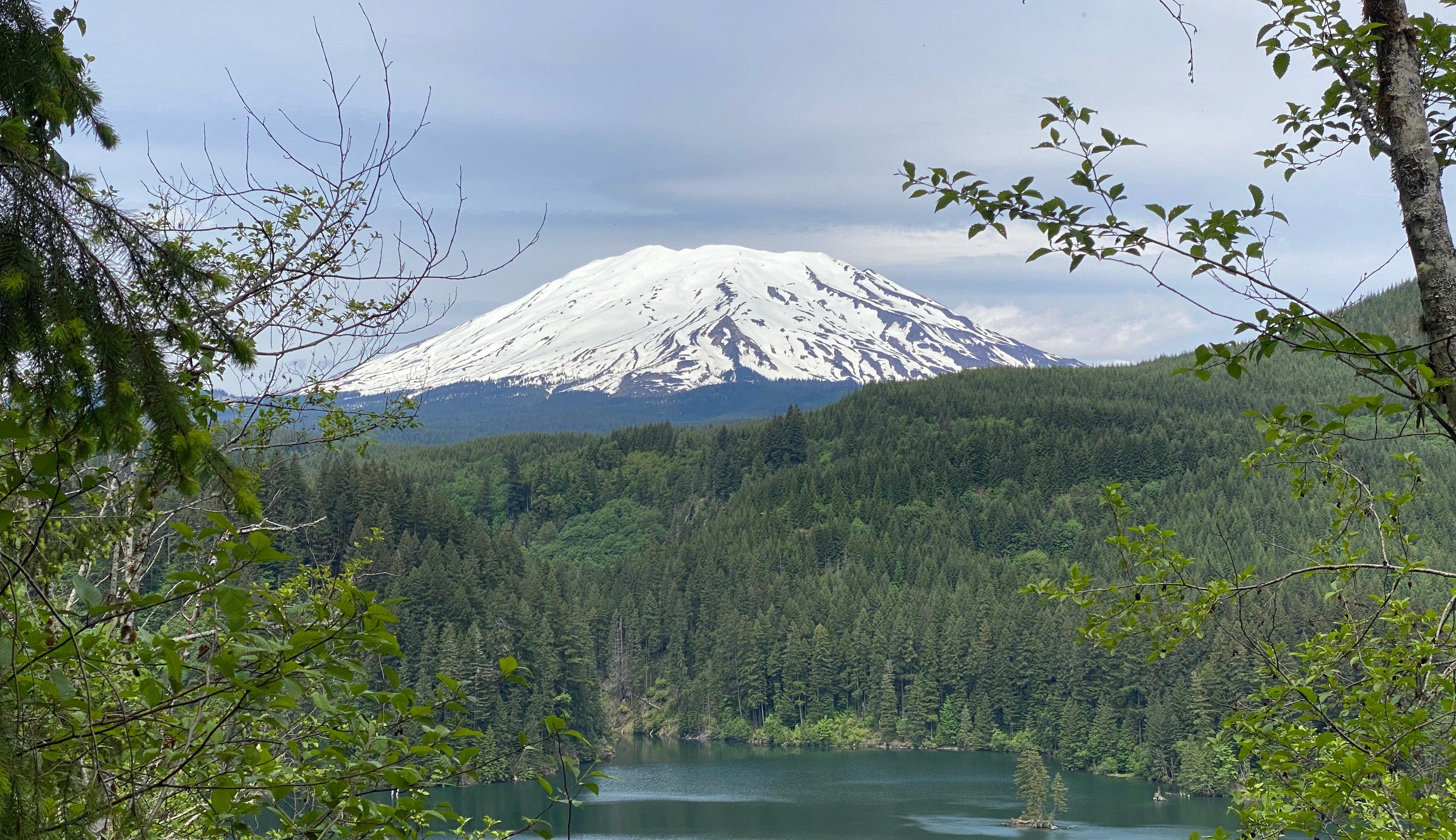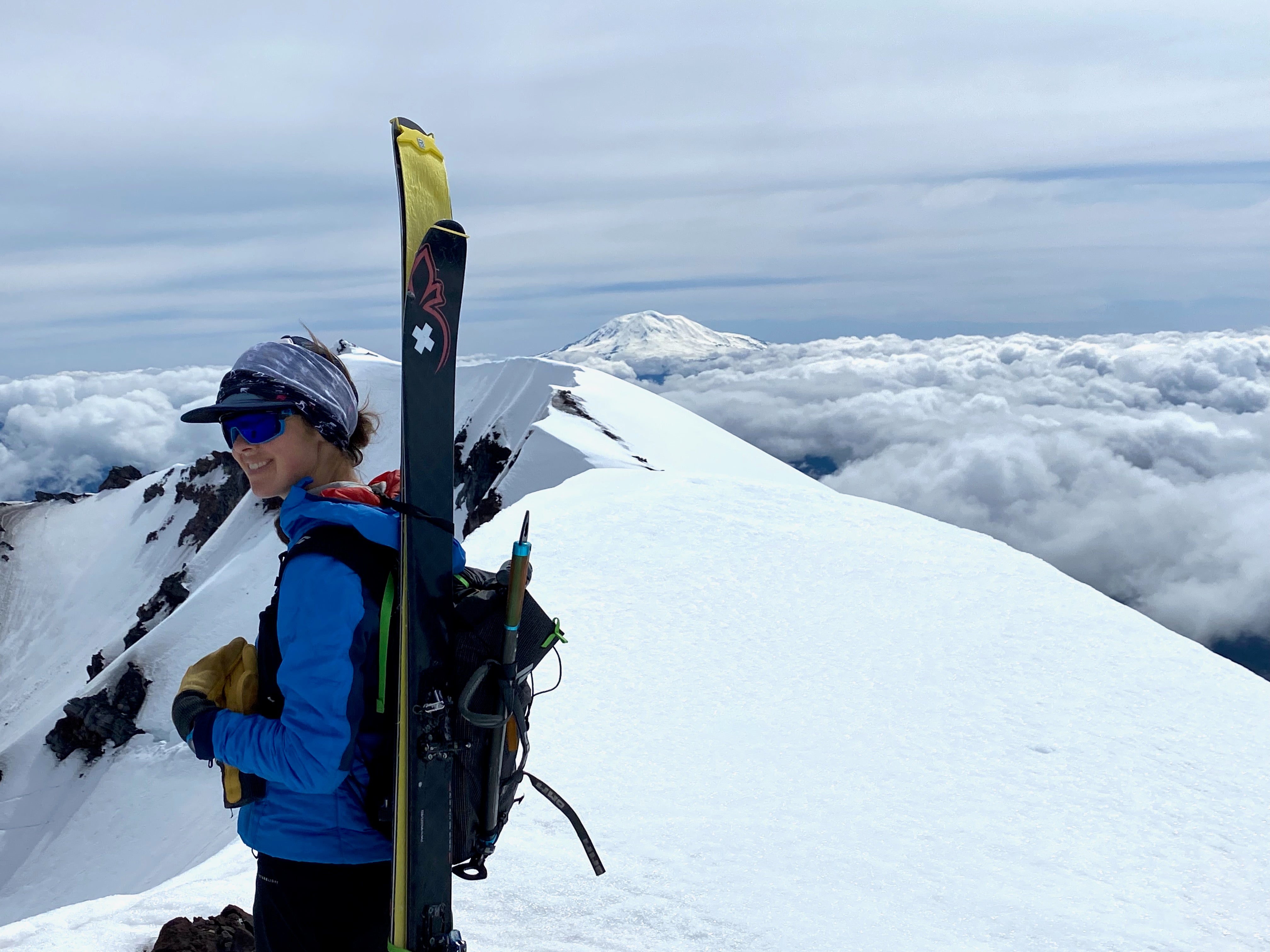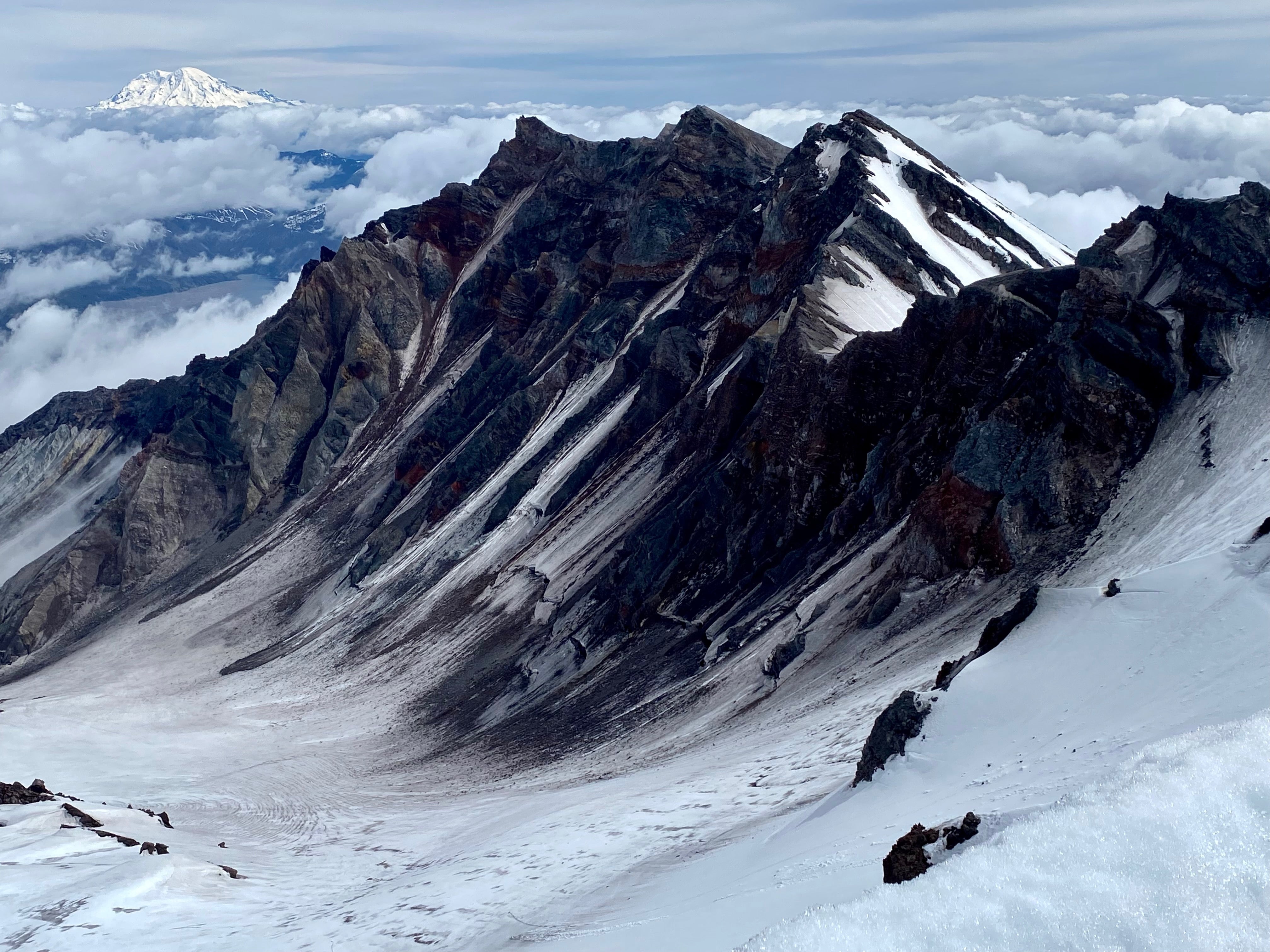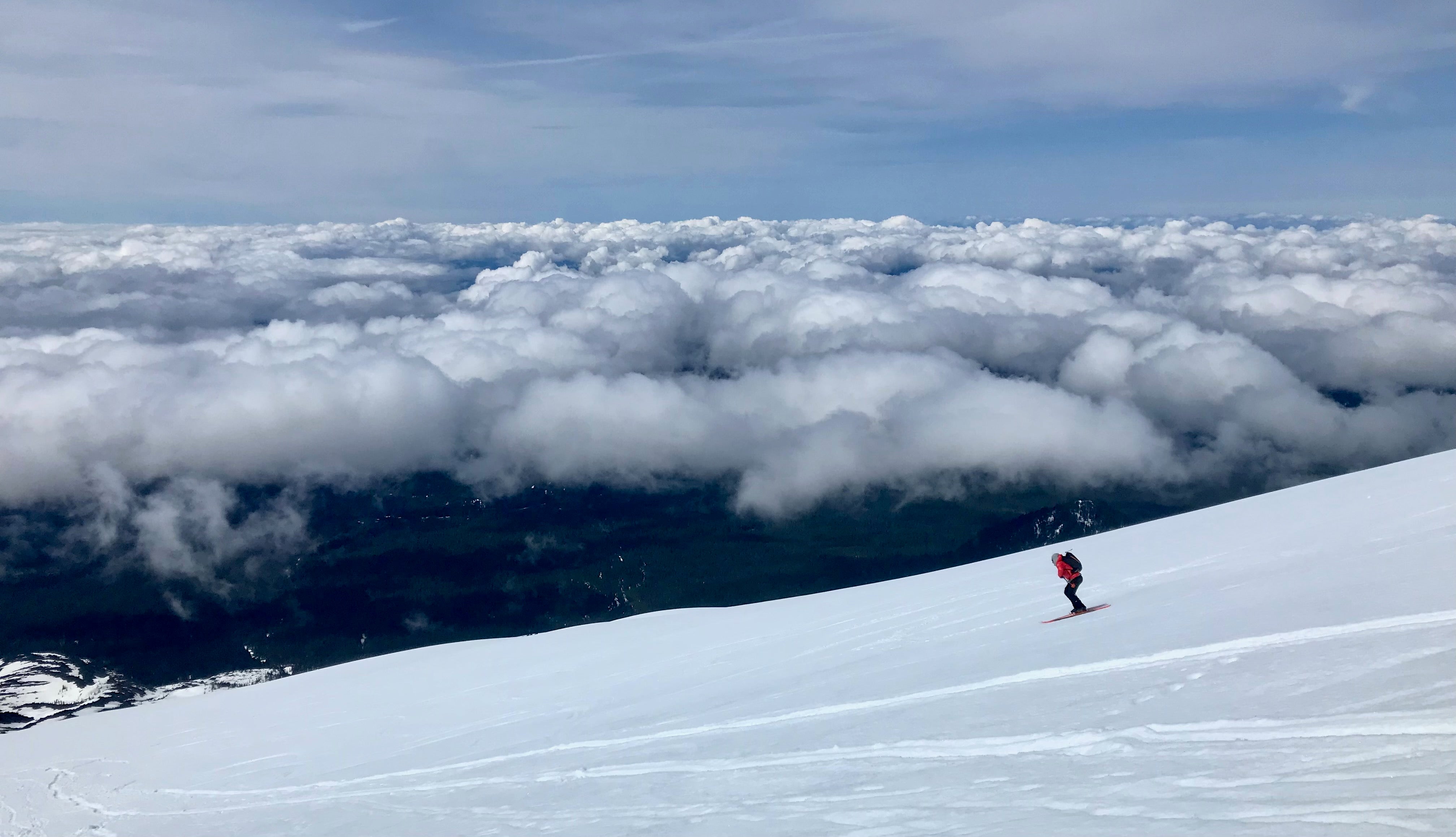The Mt. Saint Helens Basics
Date: June 8, 2022
Trip Statistic: 11 miles, 5500 vertical feet
Difficulty: Easy to Moderate (but expect a long day!
Permitting Information: Permit required April 1 - October 31
Mount St. Helens is a classic tour you shouldn't miss. Even at its former height of 9677 feet, it was the smallest volcanic peak out of the northern snow-capped domes of the Cascades. After it famously blew its top in 1980, it lost 1300 feet of prominence with the crater rim reduced to 8363 feet, but remained one of the most interesting ski missions and most elusive summits on my volcano tick list. Because of its shorter stature relative to its neighbors Hood, Adams, and Rainier, I've underestimated St. Helens on previous trips to the Pacific Northwest. My one previous attempt on St. Helens had left me wandering around in a ping pong ball during the free, un-permitted climbing season of early March. For my recent PNW stay, St. Helens was a major priority not only for the 4000+ foot ski descent but also seeing the lava dome and the only growing glacier in the lower 48 States that is nestled around it.
The winter of 2021 and 2022 amounted to a lackluster snowpack in the Pacific Northwest. Rain reached higher on many mountains, and snow levels were way below average. It seemed like the spring ski mountaineering season fell early and ceased in late March when La Niña roared in and engulfed Washington and Oregon with wet months and heavy snowfall. What was supposed to be a two week trip of high pressure and multiple summits turned into mountain biking in the valley floors between frequent strong rain showers and long soggy and drizzly days. As the trip crept towards its conclusion we had one partially clear day left; it was time to drive south from Seattle and give St. Helens a go.

To climb the south-side Worm Flows, the route finding is easy. My advice is to not wait for the ideal weather window because you could be waiting a long time. As we left the parking lot at 6am, I took many spoonfuls of my own advice in regular intervals as we wandered through the dreary dawn clouds and mushy snow that hadn’t had a good freeze in a week or more. The route starts very low at 2800 feet, and I would recommend starting in shoes for any spring descent. After patchy forest snow gave way to volcanic rock bands, there was just enough snow to apply skins by staying in the middle of the gullies. As with all spring Volcano ascents, ski crampons make the going way easier and are an essential for any packing list.

Although lower than other volcanoes, 5500 feet of ascent is nothing to scoff at. Pulling far past the halfway point, the snow remained soft, and our motivation began to collapse just as the faint skin track continued to crumble at our feet. At the most opportune time, Mount Adams began to break through the clouds to our east, and pulled us forward. As we approached the crater rim, the pitch steepened for a few hundred feet and forced us into the climbers' boot pack until giving way to mellow ridge skinning to the summit.
A large cornice guards the crater rim and we were forced to stay many feet back for fear of it collapsing. At this point, the snow had hardened to sheer ice, and we saw many skiers that had arrived before us booting back down their uptrack to below the last steep pitch. Circling the crater towards the west takes you to a small notch in the cornice where it is possible to peer right over the edge into the maw of destruction that was the 1980 eruption. Covered by recent snowfall, we could just make out the hibernating dragon of the Crater Glacier snaking around the lava dome far below, while Mount Rainier poked through the clouds in the distance.


Our site-seeing traverse gave the sun just enough time to burn through the last remaining clouds and soften the summit ice to edgeable. After the first 1000 feet of steeper firmer skiing, the snow gave way to mush, but remained fun and skiable until the last worm flow spat us back into the trees. I milked every last turn of ash and pine-covered snow patches, knowing that these could be the final turns of the 21-22 season. As we re-entered the snowpark, we spent a rare sunny hour celebrating a successful final ski in true Pacific Northwest style.
Other Resources
More WildSnow Volcano Coverage
Further reading on St Helens Crater Glacier
Previous posted trip report Cal Topo GPX Link










